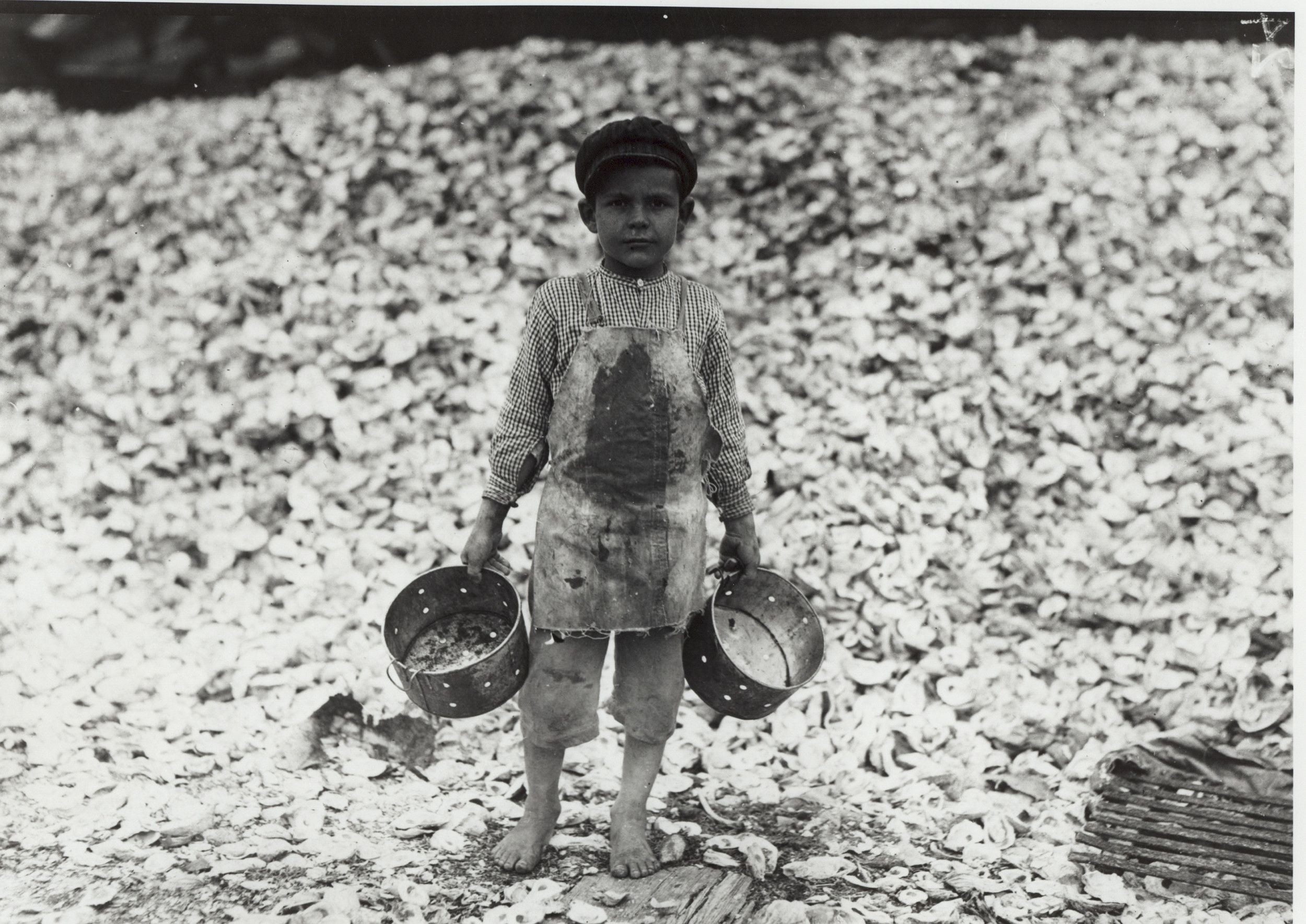Lewis Hine Shedding Light on Child Labor through Photographs
Making Connections
All documents and text associated with this activity are printed below, followed by a worksheet for student responses.Introduction
Lewis Hine, a New York City schoolteacher and photographer, believed that a picture could tell a powerful story. He felt so strongly about the abuse of children as workers that he quit his teaching job and became an investigative photographer for the National Child Labor Committee. Hine traveled around the country photographing the working conditions of children in all types of industries.He photographed children in coal mines, in meatpacking houses, in textile mills, and in canneries. He took pictures of kids working in the streets as shoe shiners, newsboys, and hawkers. In many instances, he tricked his way into factories to take the pictures that factory managers did not want the public to see.
He was careful to document every photograph with precise facts and figures. To obtain captions for his pictures, he interviewed the children on some pretext and then scribbled his notes with his hand hidden inside his pocket. Because he used subterfuge (trickery or deception) to take his photographs, he believed that he had to be "double-sure that my photo data was 100% pure--no retouching or fakery of any kind." Hine defined a good photograph as "a reproduction of impressions made upon the photographer which he desires to repeat to others." Because he realized his photographs were subjective, he described his work as "photo-interpretation."
Quickly scan the following images and choose 4 photos for deeper analysis to uncover aspects of child labor. Read the questions posed in the activity, and answer them for each photo you choose in the blank box that follows the image.
Name:
Class:
Class:
Worksheet
Lewis Hine Shedding Light on Child Labor through Photographs
Making Connections
Examine the documents and text included in this activity. Fill in any blanks in the sequence with your thoughts and write your conclusion response in the space provided.Photograph of Lewis W. Hine
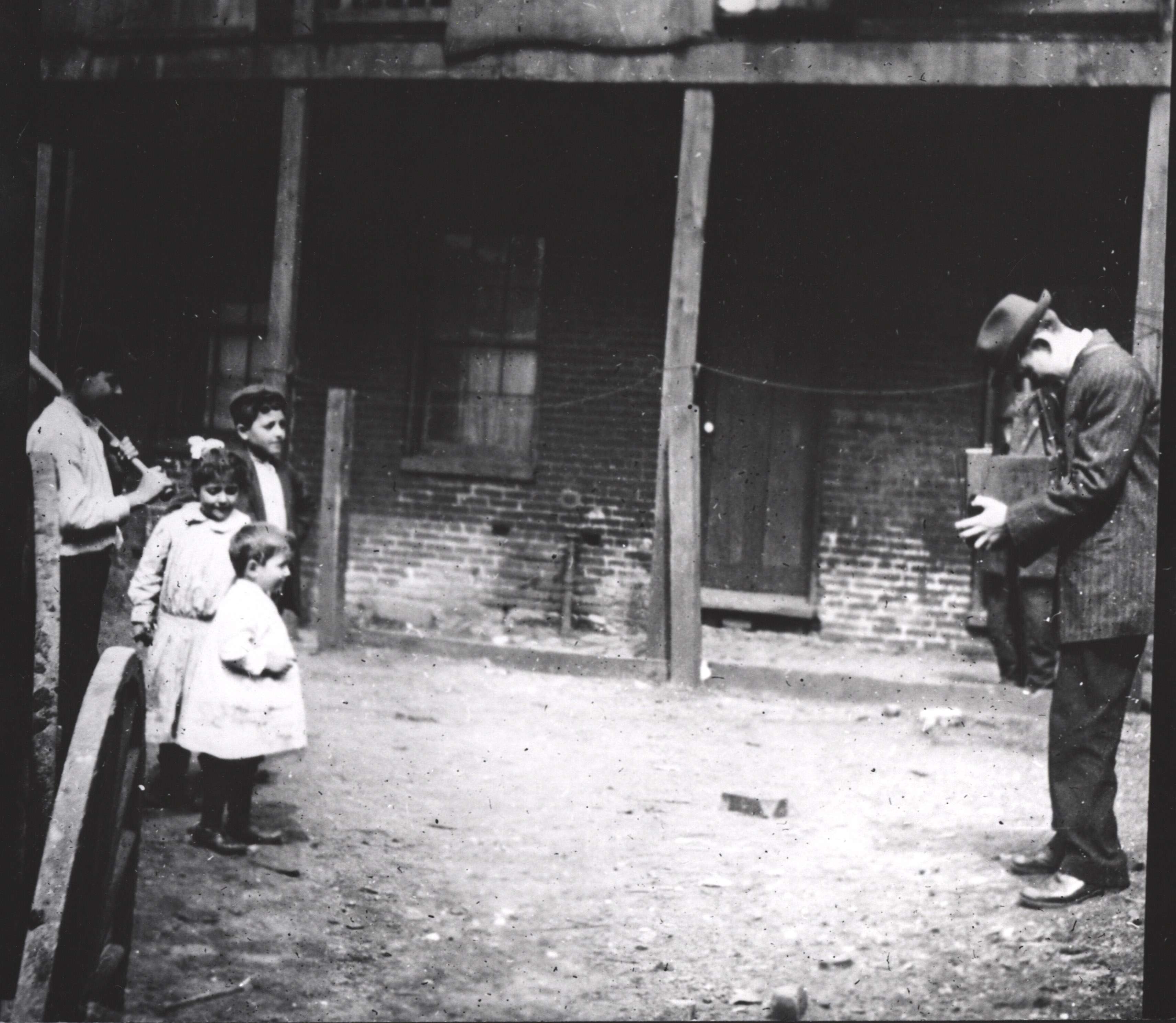
Choose 4 of the following photographs and complete document analysis. Respond to these questions in the blank box that follows the image you choose.
1. Quickly scan the photo. What do you notice first?
2. List the people, objects and activities you see.
3. Where is it from?
4. When is it from?
5. Write one sentence summarizing this photo.
6. What did you find out from this photo that you might not learn anywhere else?
1. Quickly scan the photo. What do you notice first?
2. List the people, objects and activities you see.
3. Where is it from?
4. When is it from?
5. Write one sentence summarizing this photo.
6. What did you find out from this photo that you might not learn anywhere else?
A young truant newsie, during school hours. Nashville, Tenn.
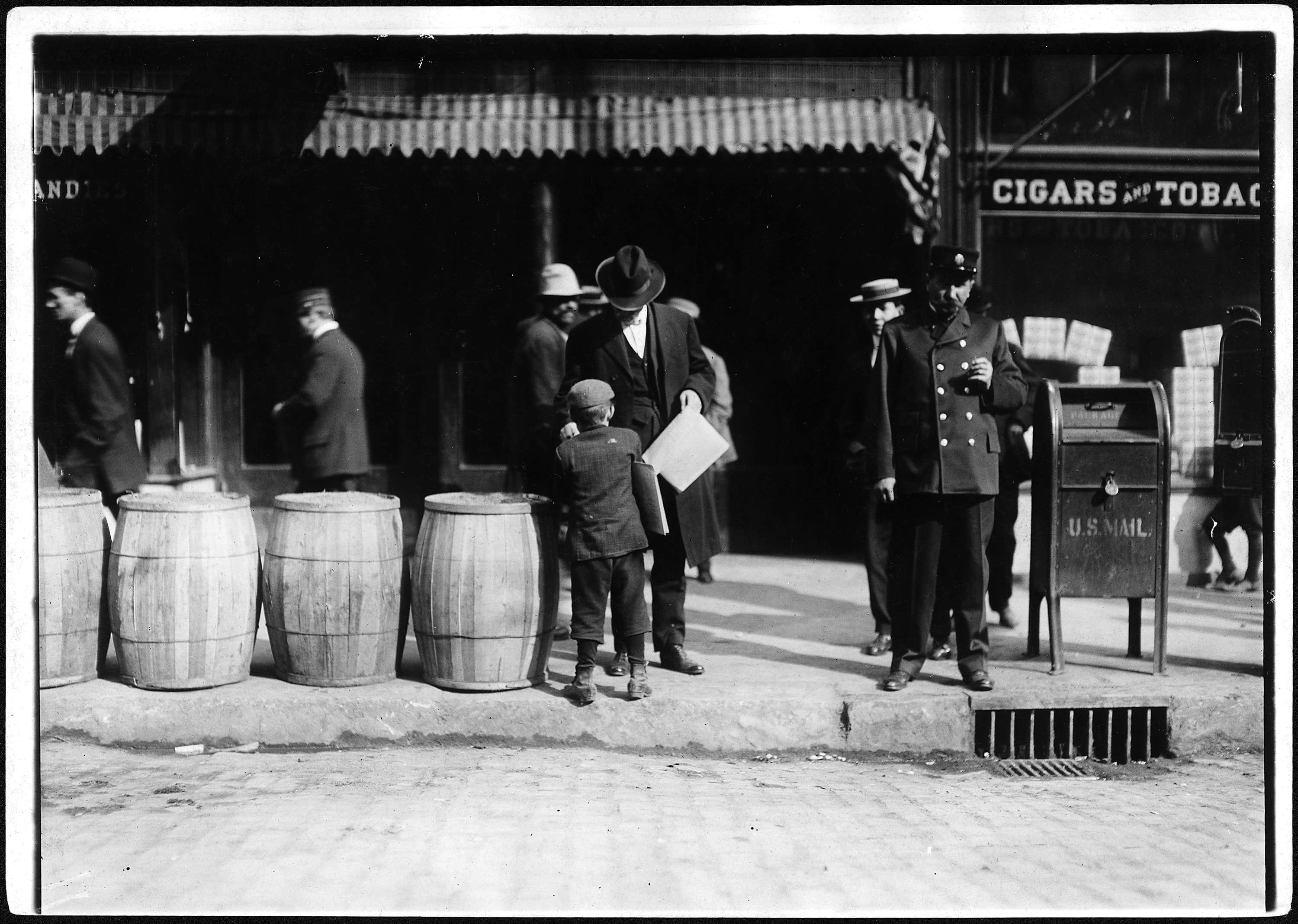
Enter your response
Some of the boys in a "school factory." De Pedra Casellas Cigar Factory. 18 employees, 5 of them are apprentices. Pay to be permitted to work.
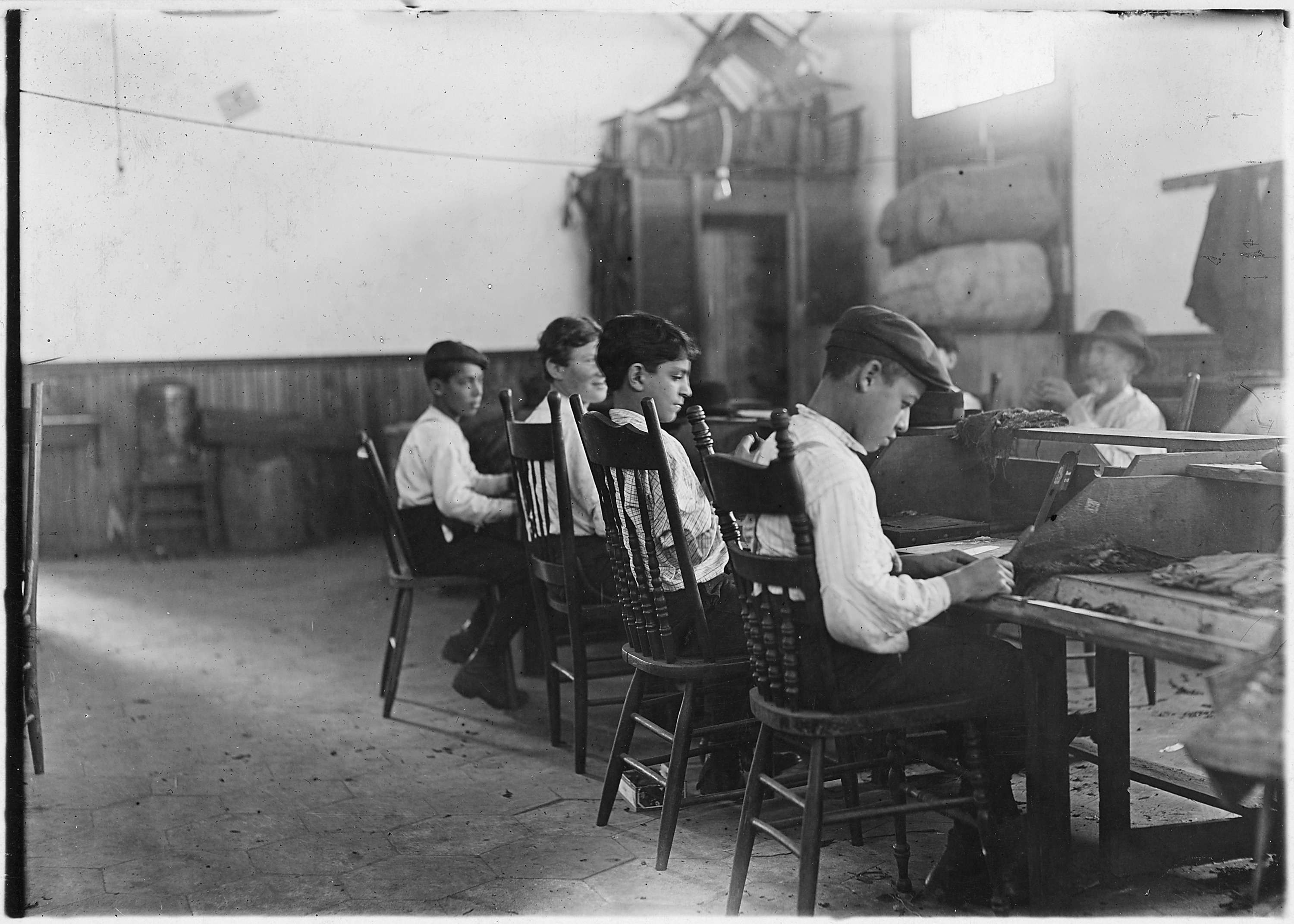
Enter your response
View of the Ewen Breaker of the Pa. Coal Co. S. Pittston, Pa.
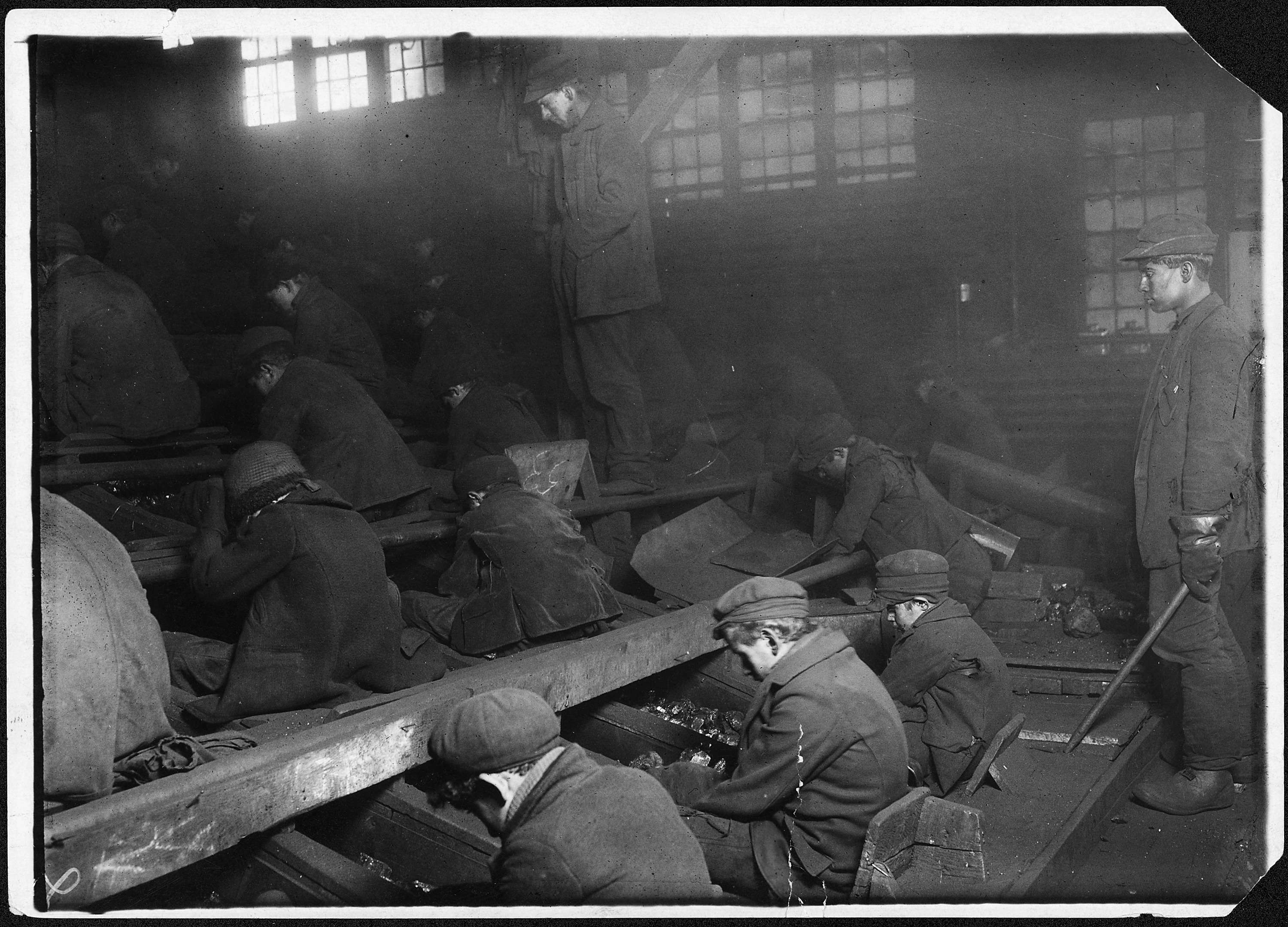
Enter your response
9 P.M. in an Indiana Glass Works. Indiana
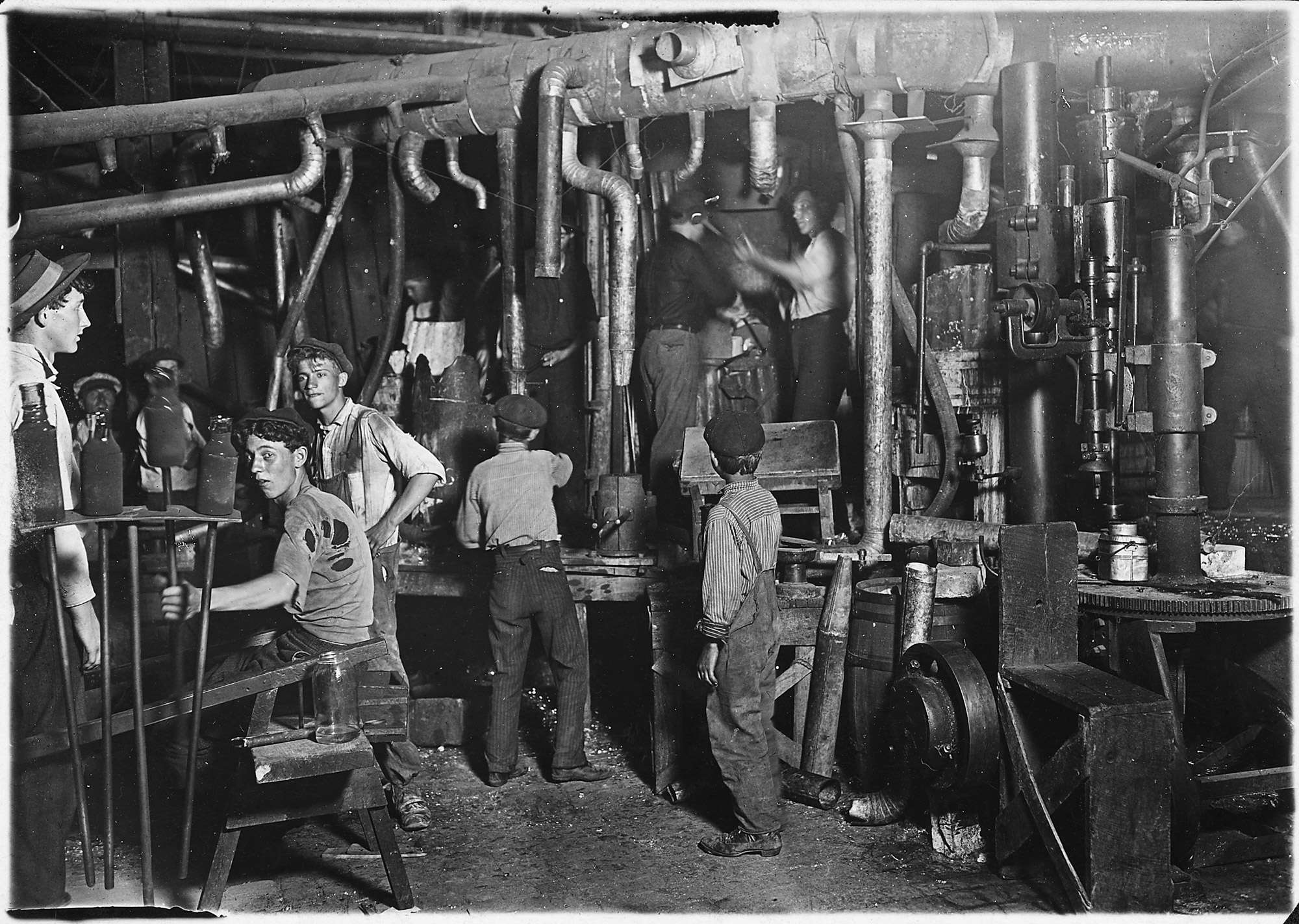
Enter your response
Girl working in Box Factory. I saw 10 small boys and girls working. Has a bad reputation for employment of youngsters, but work is slack now. Tampa, Fla.

Enter your response
Group showing a few of the workers stringing beans in the J.S. Farrand Packing Co. Those too small to work are held on laps of workers or stowed away in boxes. Baltimore, Md.

Enter your response
Norris Luvitt. Been picking 3 years in berry fields near Baltimore.
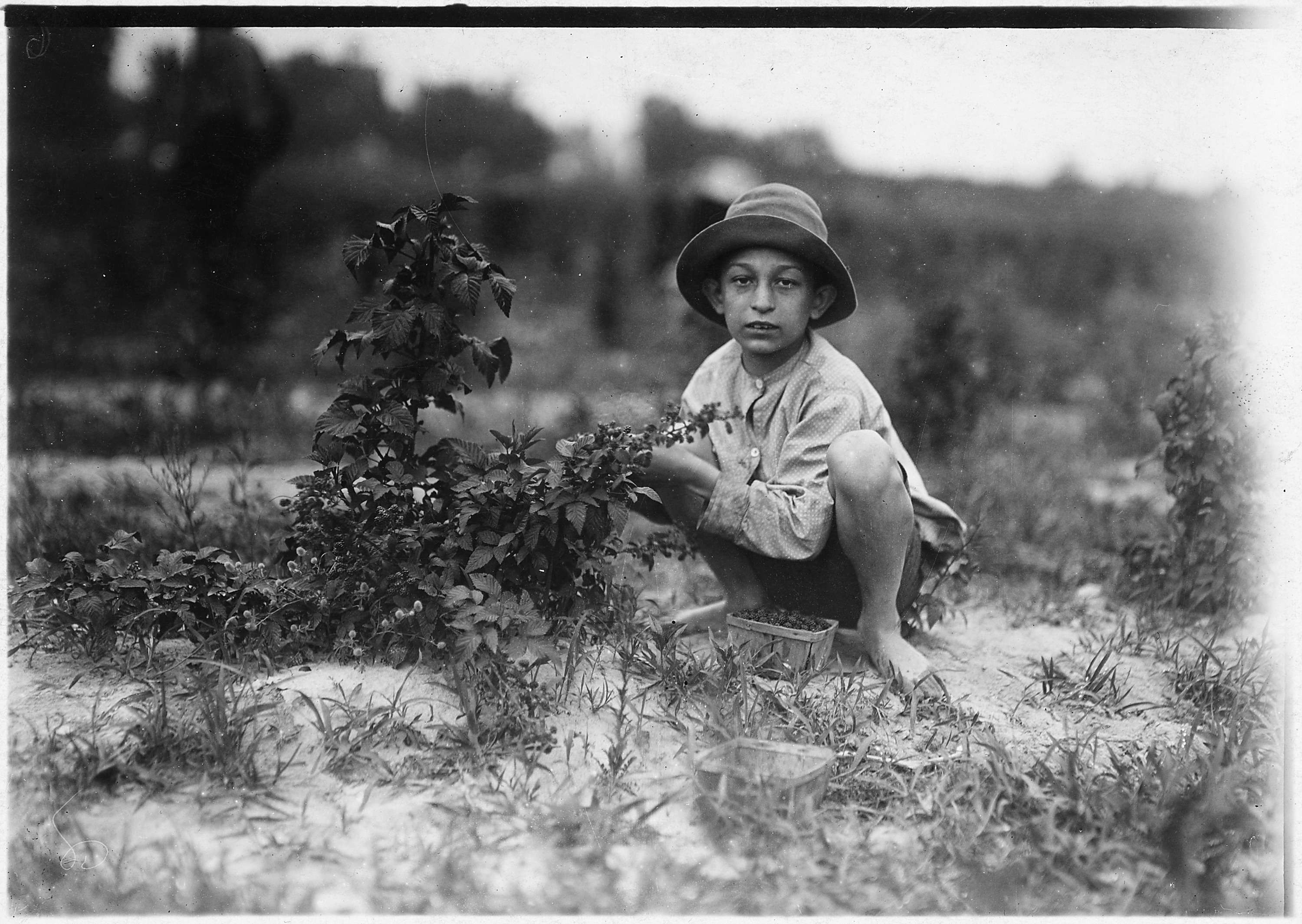
Enter your response
Spinners and doffers in Lancaster Cotton Mills. Dozens of them in this mill. Lancaster, S.C.
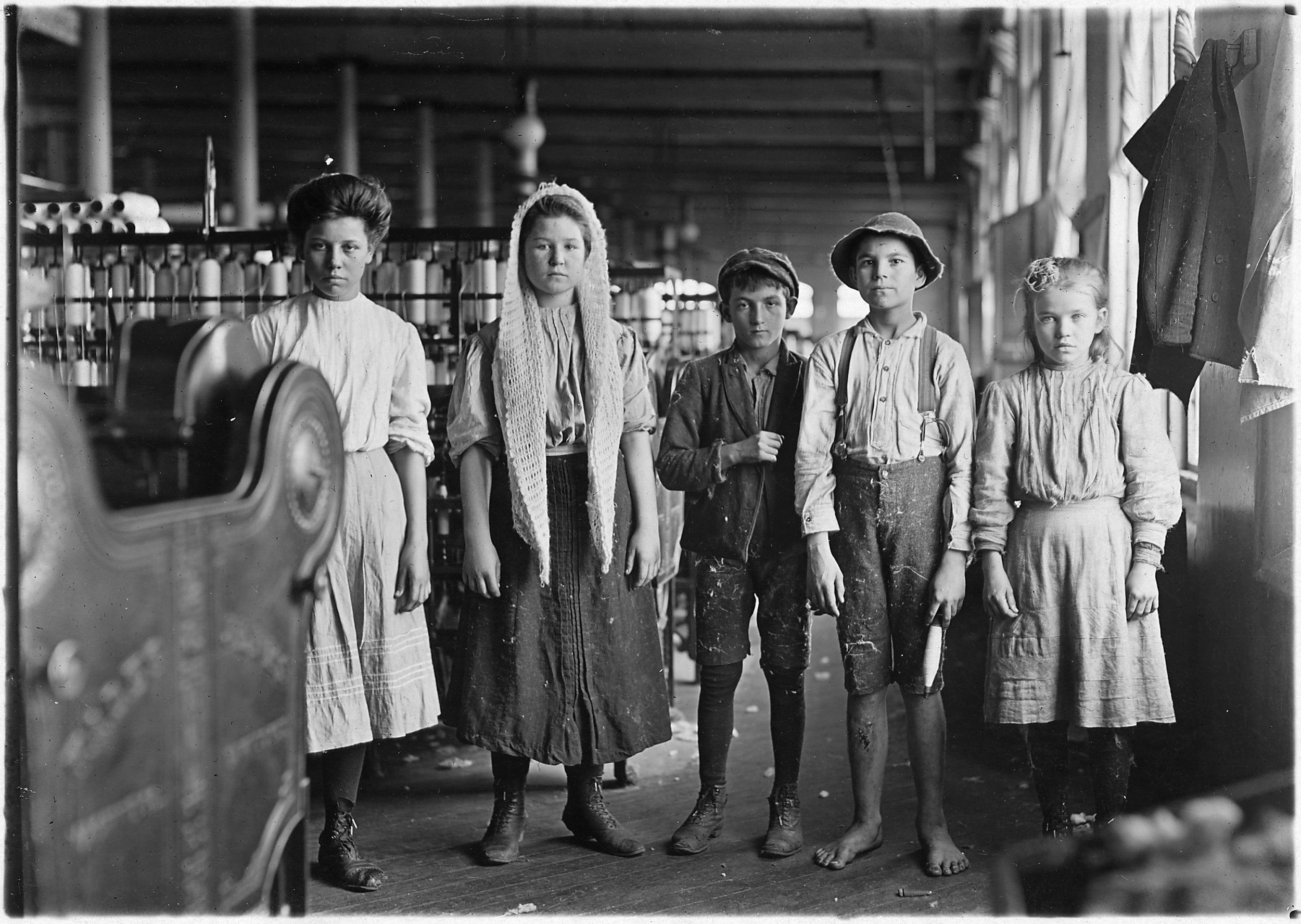
Enter your response
Making garters (armlets) in New York City apartment.
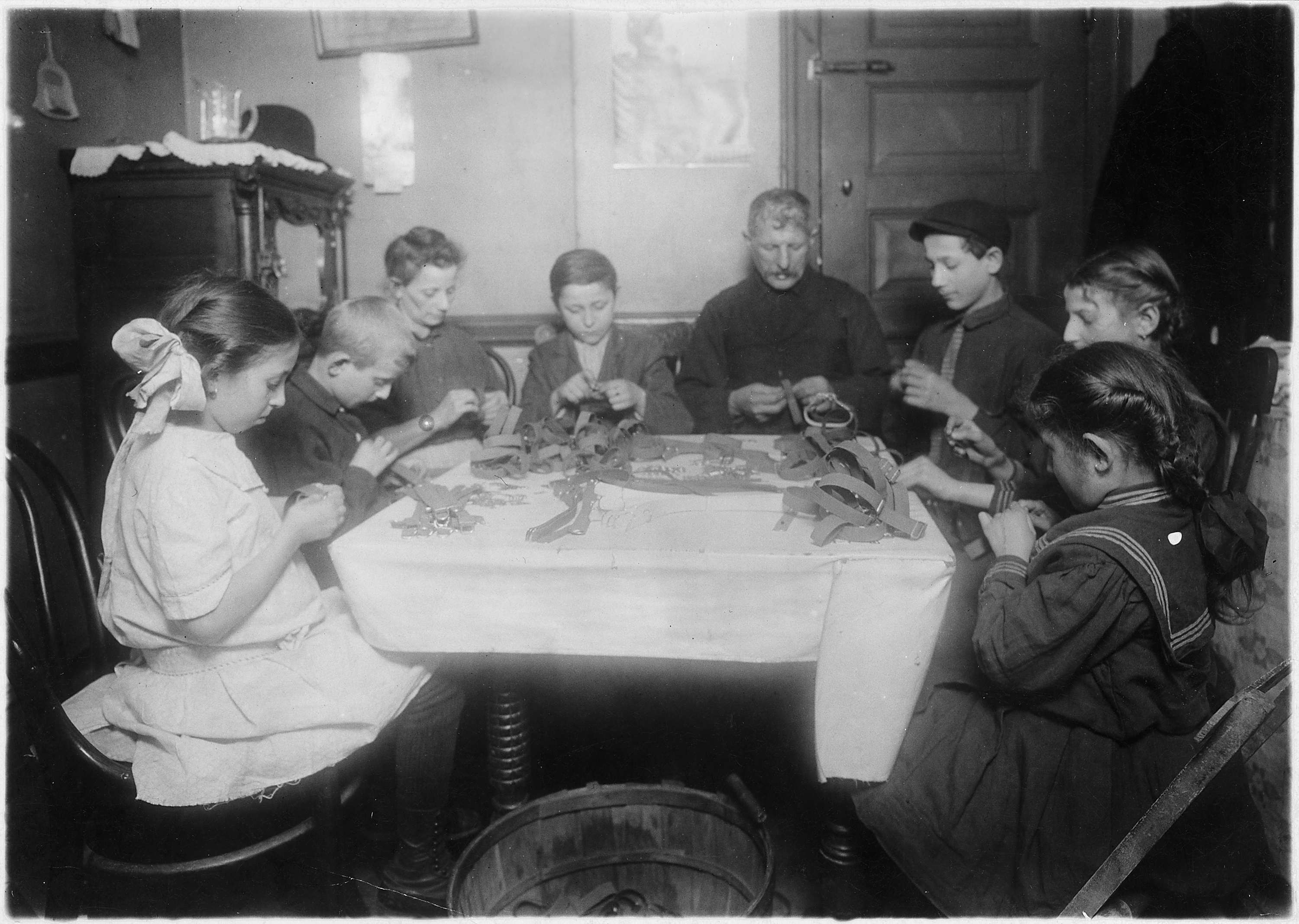
Enter your response
Photo of boys working in Arcade Bowling Alley. Photo taken late at night. The boys work until midnight and later. Trenton, N.J.
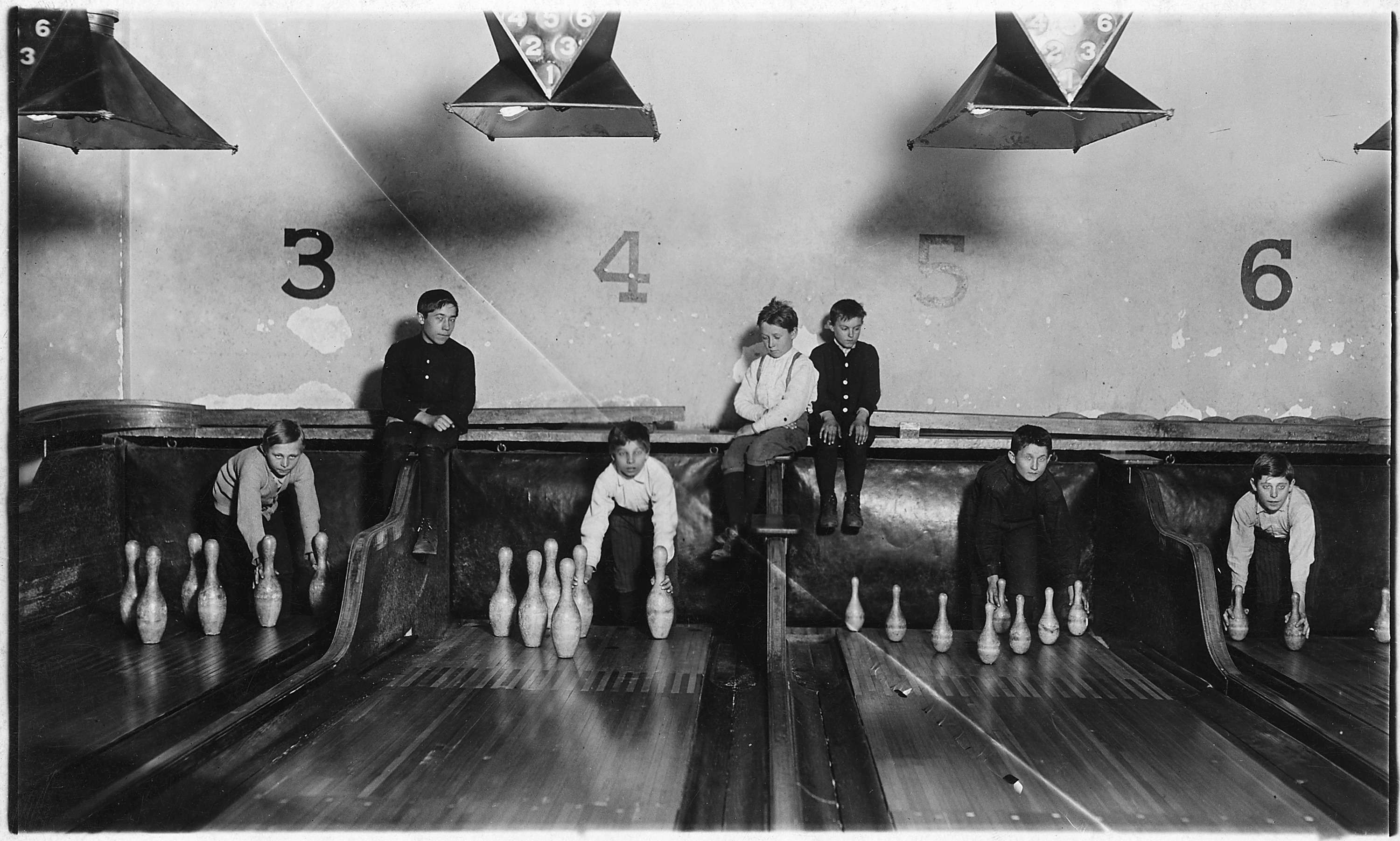
Enter your response
Photograph of a Young Shrimp Picker Named Manuel
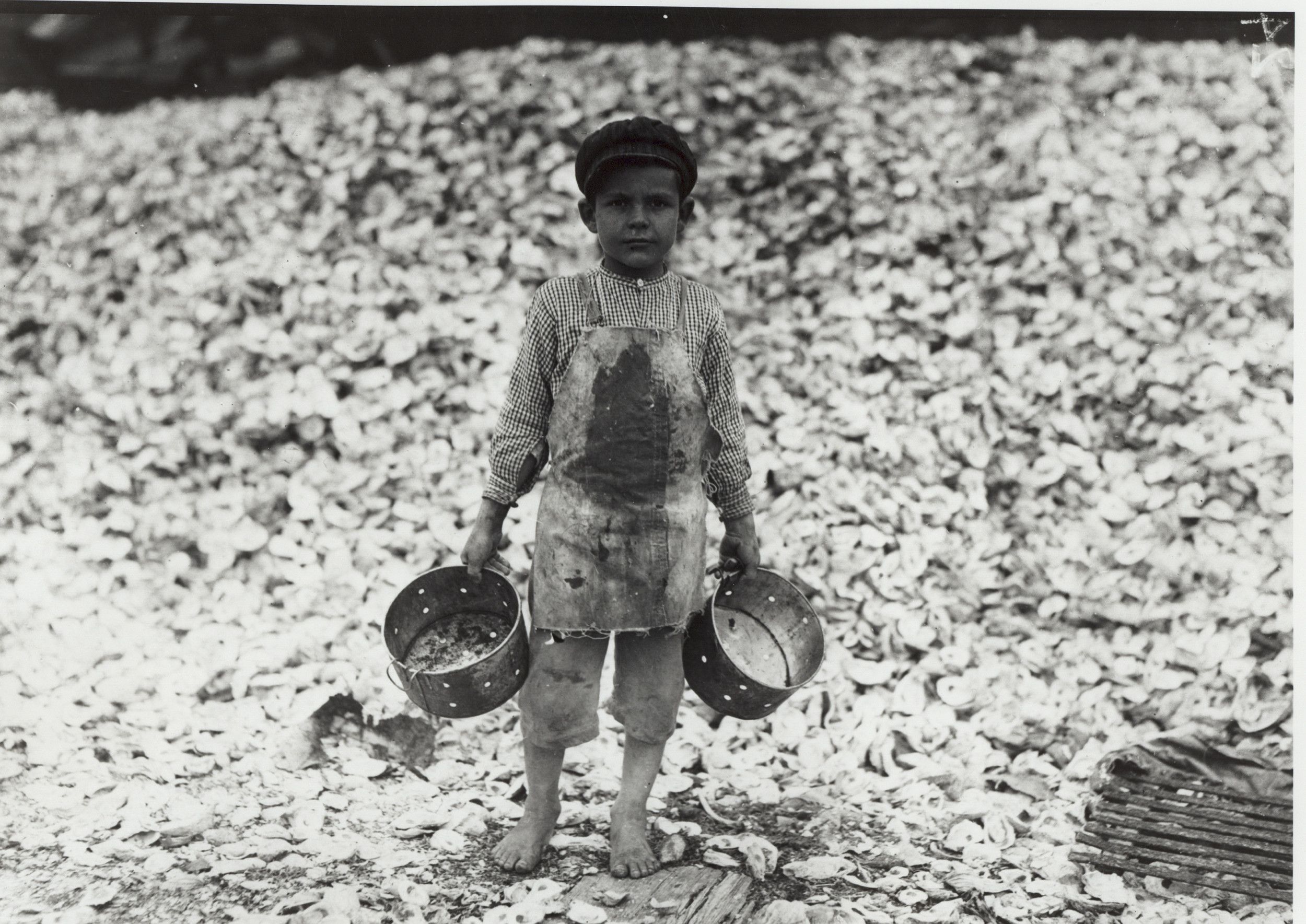
Enter your response
1
Activity Element
Photograph of Lewis W. Hine
Page 1

2
Activity Element
A young truant newsie, during school hours. Nashville, Tenn.
Page 1

3
Activity Element
Some of the boys in a "school factory." De Pedra Casellas Cigar Factory. 18 employees, 5 of them are apprentices. Pay to be permitted to work.
Page 1

4
Activity Element
View of the Ewen Breaker of the Pa. Coal Co. S. Pittston, Pa.
Page 1

5
Activity Element
9 P.M. in an Indiana Glass Works. Indiana
Page 2

6
Activity Element
Girl working in Box Factory. I saw 10 small boys and girls working. Has a bad reputation for employment of youngsters, but work is slack now. Tampa, Fla.
Page 1

7
Activity Element
Group showing a few of the workers stringing beans in the J.S. Farrand Packing Co. Those too small to work are held on laps of workers or stowed away in boxes. Baltimore, Md.
Page 1

8
Activity Element
Norris Luvitt. Been picking 3 years in berry fields near Baltimore.
Page 1

9
Activity Element
Spinners and doffers in Lancaster Cotton Mills. Dozens of them in this mill. Lancaster, S.C.
Page 2

10
Activity Element
Making garters (armlets) in New York City apartment.
Page 1

11
Activity Element
Photo of boys working in Arcade Bowling Alley. Photo taken late at night. The boys work until midnight and later. Trenton, N.J.
Page 2

12
Activity Element
Photograph of a Young Shrimp Picker Named Manuel
Page 1

Conclusion
Lewis Hine Shedding Light on Child Labor through Photographs
Making Connections
Compile a list of adjectives that describe the life of a child working at the turn of the 20th century. For specific adjectives, explain their choices with specific evidence from the photographs.Your Response
Document
Photograph of Lewis W. Hine
ca. 1912
Lewis Hine, a New York City schoolteacher and photographer, believed that a picture could tell a powerful story. He felt so strongly about the abuse of children as workers that he quit his teaching job and became an investigative photographer for the National Child Labor Committee.
Hine traveled around the country photographing the working conditions of children in all types of industries. He photographed children in coal mines, in meatpacking houses, in textile mills, and in canneries. He took pictures of children working in the streets as shoe shiners, newsboys, and hawkers. In many instances he tricked his way into factories to take the pictures that factory managers did not want the public to see.
He was careful to document every photograph with precise facts and figures. To obtain captions for his pictures, he interviewed the children on some pretext and then scribbled his notes with his hand hidden inside his pocket. Because he used subterfuge to take his photographs, he believed that he had to be "double-sure that my photo data was 100% pure--no retouching or fakery of any kind." Hine defined a good photograph as "a reproduction of impressions made upon the photographer which he desires to repeat to others." Because he realized his photographs were subjective, he described his work as "photo-interpretation."
Hine traveled around the country photographing the working conditions of children in all types of industries. He photographed children in coal mines, in meatpacking houses, in textile mills, and in canneries. He took pictures of children working in the streets as shoe shiners, newsboys, and hawkers. In many instances he tricked his way into factories to take the pictures that factory managers did not want the public to see.
He was careful to document every photograph with precise facts and figures. To obtain captions for his pictures, he interviewed the children on some pretext and then scribbled his notes with his hand hidden inside his pocket. Because he used subterfuge to take his photographs, he believed that he had to be "double-sure that my photo data was 100% pure--no retouching or fakery of any kind." Hine defined a good photograph as "a reproduction of impressions made upon the photographer which he desires to repeat to others." Because he realized his photographs were subjective, he described his work as "photo-interpretation."
This primary source comes from the General Records of the Department of Labor.
National Archives Identifier: 7580918
Full Citation: 174-G-22-4; Photograph of Lewis W. Hine; ca. 1912 ; Photographic Prints of Occupations, Labor Activities, and Personalities; General Records of the Department of Labor, ; National Archives at College Park - Still Pictures (RDSS). [Online Version, https://docsteach.org/documents/document/photograph-of-lewis-w-hine, April 19, 2024]Photograph of Lewis W. Hine
Page 1
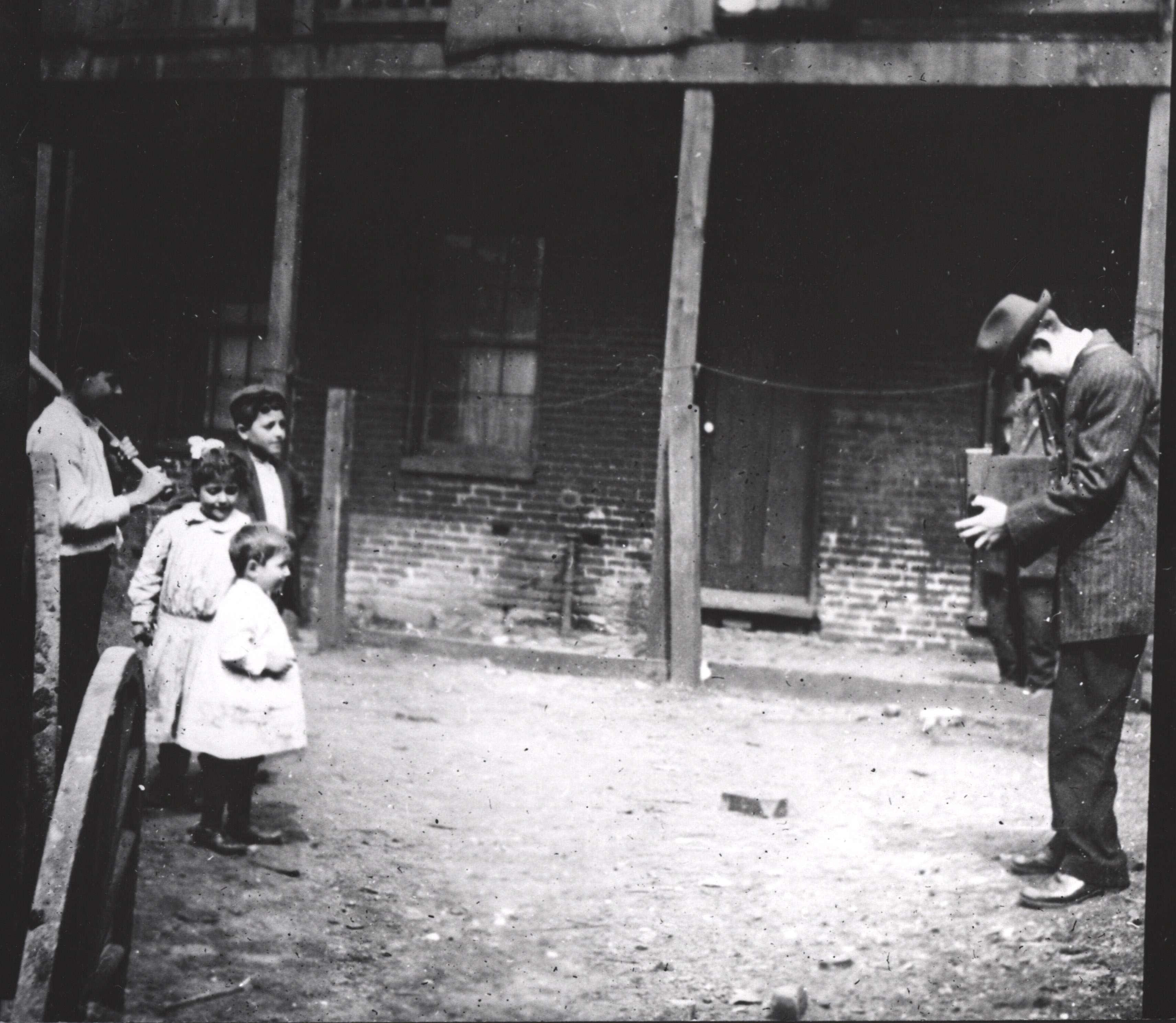
Document
A young truant newsie, during school hours. Nashville, Tenn.
11/14/1910
This primary source comes from the Records of the Children's Bureau.
National Archives Identifier: 523343
Full Citation: 102-LH-1752; A young truant newsie, during school hours. Nashville, Tenn.; 11/14/1910; Records of the Children's Bureau, ; National Archives at College Park, College Park, MD. [Online Version, https://docsteach.org/documents/document/a-young-truant-newsie-during-school-hours-nashville-tenn, April 19, 2024]A young truant newsie, during school hours. Nashville, Tenn.
Page 1
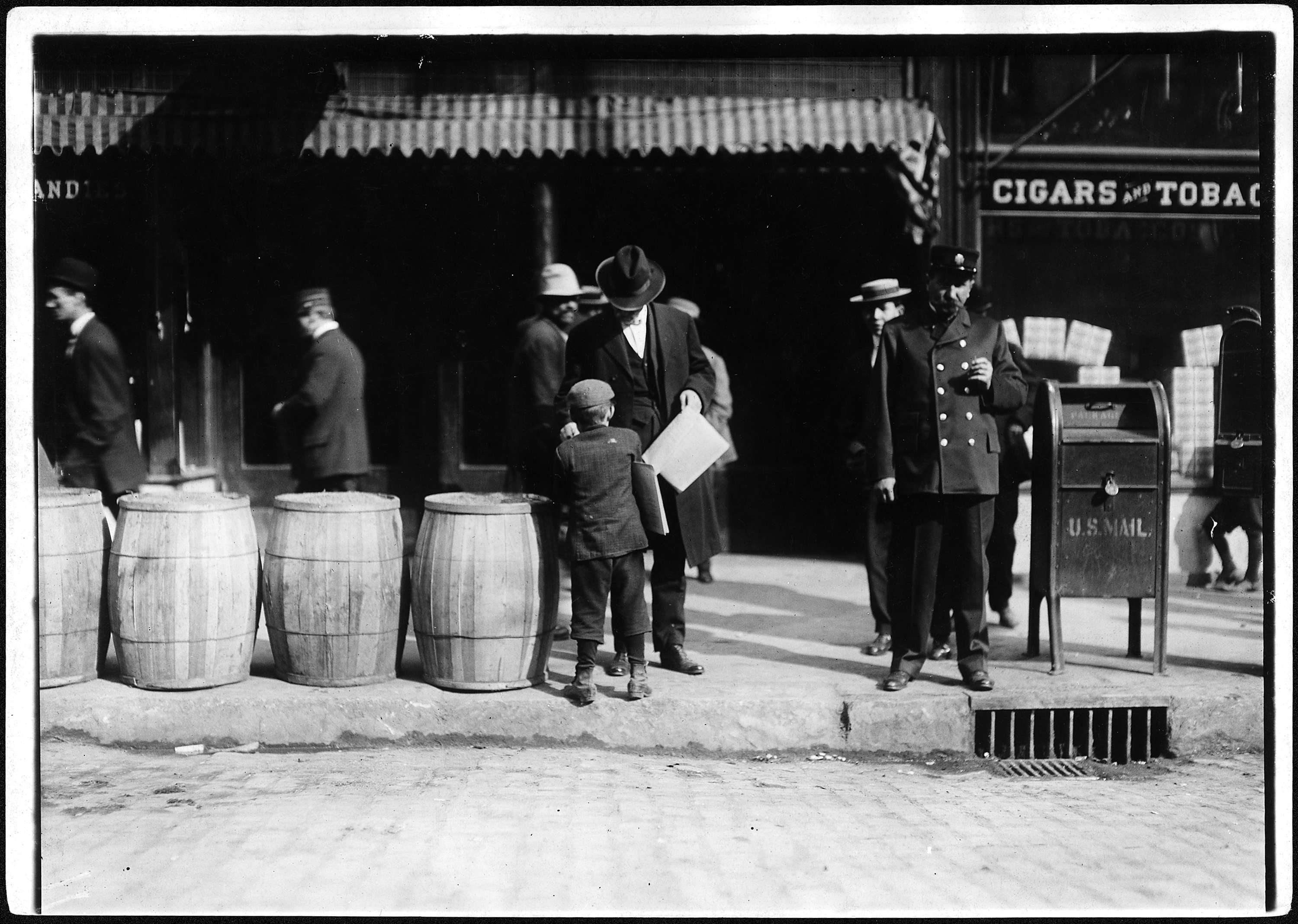
Document
Some of the boys in a 'school factory.'
1/28/1909
Original caption states: "Some of the boys in a "school factory." De Pedra Casellas Cigar Factory. 18 employees, 5 of them are apprentices. Pay to be permitted to work."
This primary source comes from the Records of the Children's Bureau.
National Archives Identifier: 523164
Full Citation: 102-LH-570; Some of the boys in a 'school factory.' ; 1/28/1909; National Child Labor Committee Photographs taken by Lewis Hine, ca. 1912 - ca. 1912; Records of the Children's Bureau, ; National Archives at College Park, College Park, MD. [Online Version, https://docsteach.org/documents/document/boys-school-factory-de-pedra-casellas-cigar-factory, April 19, 2024]Some of the boys in a 'school factory.'
Page 1
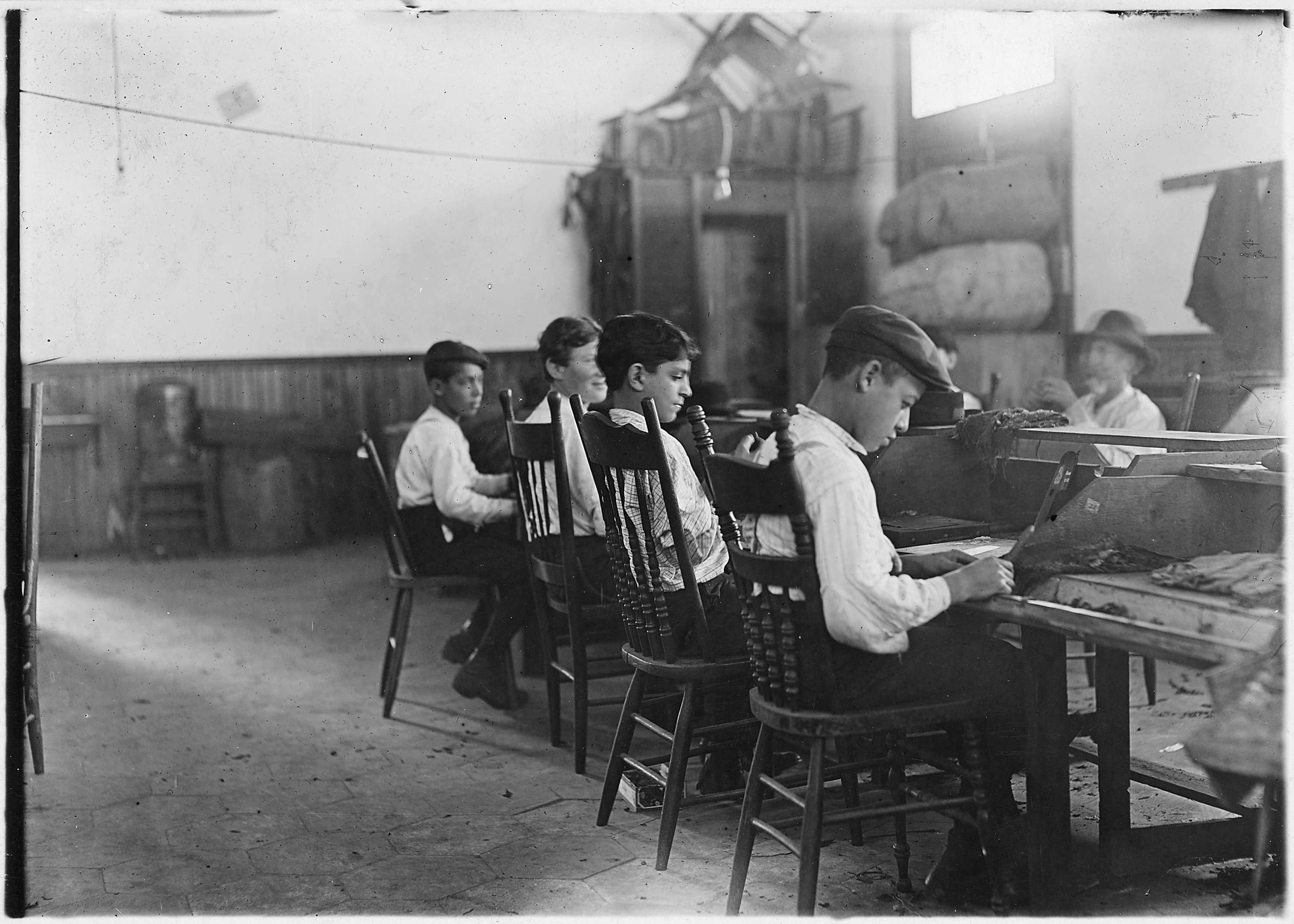
Document
View of the Ewen Breaker of the Pa. Coal Co. S. Pittston, Pa.
1/10/1911
View of the Ewen Breaker of the Pa. Coal Co. The dust was so dense at times as to obscure the view. This dust penetrated the utmost recesses of the boy's lungs. A kind of slave-driver sometimes stands over the boys, prodding or kicking them into obedience. S. Pittston, Pa.
This primary source comes from the Records of the Children's Bureau.
National Archives Identifier: 523378
Full Citation: View of the Ewen Breaker of the Pa. Coal Co. S. Pittston, Pa.; 1/10/1911; National Child Labor Committee Photographs taken by Lewis Hine, ca. 1912 - ca. 1912; Records of the Children's Bureau, ; National Archives at College Park, College Park, MD. [Online Version, https://docsteach.org/documents/document/view-of-the-ewen-breaker-of-the-pa-coal-co-s-pittston-pa, April 19, 2024]View of the Ewen Breaker of the Pa. Coal Co. S. Pittston, Pa.
Page 1

Document
9 P.M. in an Indiana Glass Works. Indiana
8/1908
The growth of industry after the Civil War increased the demand for workers and pulled more and more children into the labor force. By 1910, children made up 18.4 percent of the total labor force. The National Child Labor Committee, in New York City began investigations with child labor conditions in coal mines, capitalizing on the public concern raised during the nationwide coal miners' strike of 1902. Later, NCLC investigations centered upon the glassmaking industry, textile mills-especially in the South-and the canning industry. In 1908, the NCLC hired Lewis W. Hine to investigate and to photograph the conditions of working children. Text adapted from “Three Photographs of Children At Work, Circa 1908” in the February 1982 National Council for the Social Studies (NCSS) publication Social Education.
This primary source comes from the Records of the Children's Bureau.
National Archives Identifier: 523086
Full Citation: Photograph 102-LH-120; 9 P.M. in an Indiana Glass Works. Indiana; 8/1908; National Child Labor Committee Photographs taken by Lewis Hine, ca. 1912 - ca. 1912; Records of the Children's Bureau, ; National Archives at College Park, College Park, MDonal Archives at College Park, College Park, MD. [Online Version, https://docsteach.org/documents/document/9-pm-in-an-indiana-glass-works-indiana, April 19, 2024]9 P.M. in an Indiana Glass Works. Indiana
Page 2

Document
Girl working in Box Factory. I saw 10 small boys and girls working. Has a bad reputation for employment of youngsters, but work is slack now. Tampa, Fla.
1/28/1909
This primary source comes from the Records of the Children's Bureau.
National Archives Identifier: 523166
Full Citation: Girl working in Box Factory. I saw 10 small boys and girls working. Has a bad reputation for employment of youngsters, but work is slack now. Tampa, Fla.; 1/28/1909; Records of the Children's Bureau, . [Online Version, https://docsteach.org/documents/document/girl-working-in-box-factory-i-saw-10-small-boys-and-girls-working-has-a-bad-reputation-for-employment-of-youngsters-but-work-is-slack-now-tampa-fla, April 19, 2024]Girl working in Box Factory. I saw 10 small boys and girls working. Has a bad reputation for employment of youngsters, but work is slack now. Tampa, Fla.
Page 1

Document
Group showing a few of the workers stringing beans in the J.S. Farrand Packing Co. Those too small to work are held on laps of workers or stowed away in boxes. Baltimore, Md.
6/7/1909
Lewis Hine took this photograph as part of his work as an investigative photographer for the National Child Labor Committee. His original caption reads: Group showing a few of the workers stringing beans in the J.S. Farrand Packing Co. Those too small to work are held on laps of workers or stowed away in boxes. Baltimore, Md.
This primary source comes from the Records of the Children's Bureau.
National Archives Identifier: 523215
Full Citation: Photograph 102-LH-855; Group showing a few of the workers stringing beans in the J.S. Farrand Packing Co. Those too small to work are held on laps of workers or stowed away in boxes. Baltimore, Md.; 6/7/1909; National Child Labor Committee Photographs taken by Lewis Hine, ca. 1912 - ca. 1912; Records of the Children's Bureau, ; National Archives at College Park, College Park, MD. [Online Version, https://docsteach.org/documents/document/stringing-beans, April 19, 2024]Group showing a few of the workers stringing beans in the J.S. Farrand Packing Co. Those too small to work are held on laps of workers or stowed away in boxes. Baltimore, Md.
Page 1
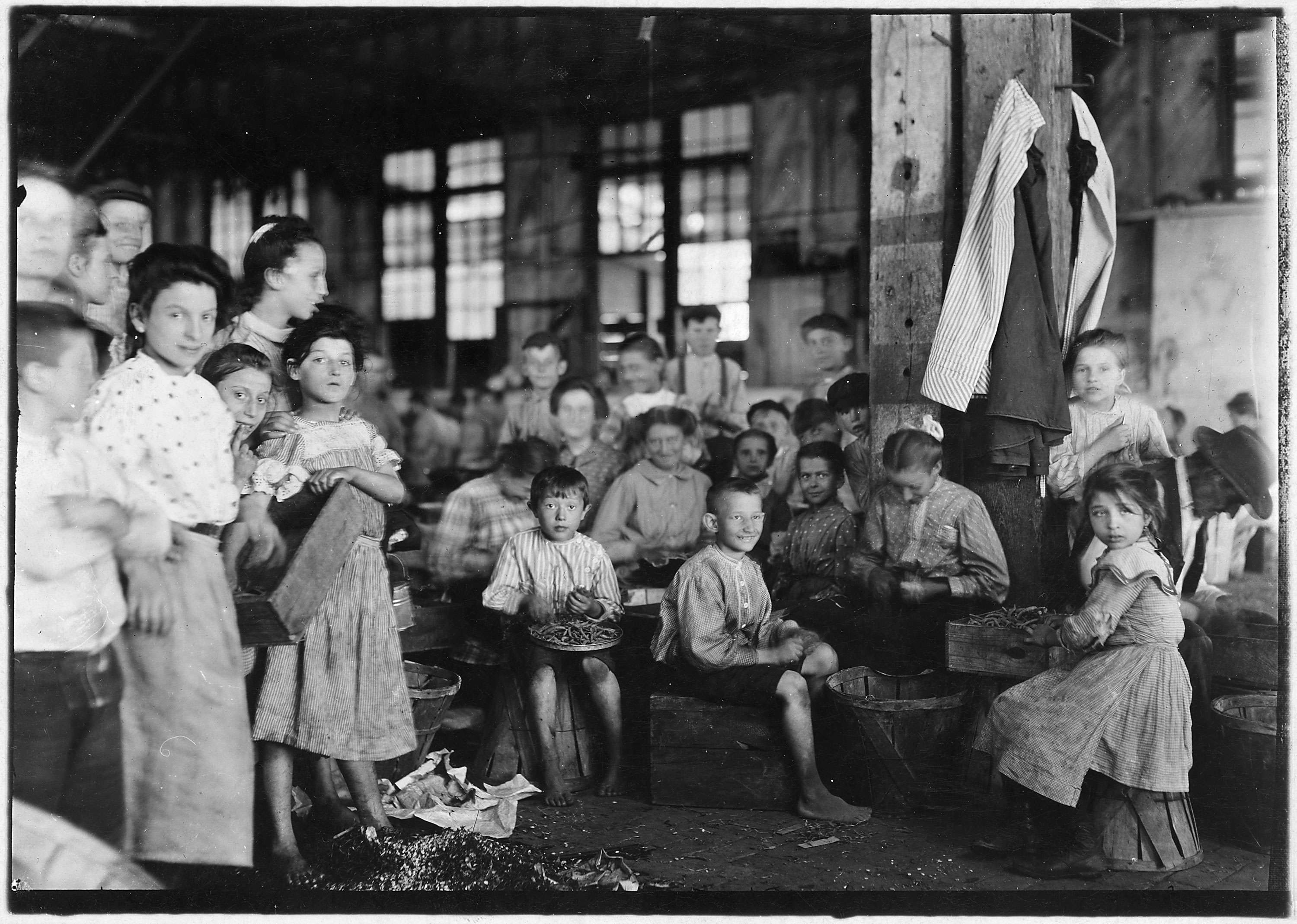
Document
Norris Luvitt. Been picking 3 years in berry fields near Baltimore.
6/8/1909
This primary source comes from the Records of the Children's Bureau.
National Archives Identifier: 523205
Full Citation: 102-LH-828; Norris Luvitt. Been picking 3 years in berry fields near Baltimore.; 6/8/1909; National Child Labor Committee Photographs taken by Lewis Hine, ca. 1912–ca. 1912; Records of the Children's Bureau, ; National Archives at College Park, College Park, MD. [Online Version, https://docsteach.org/documents/document/norris-luvitt-been-picking-3-years-in-berry-fields-near-baltimore, April 19, 2024]Norris Luvitt. Been picking 3 years in berry fields near Baltimore.
Page 1

Document
Spinners and doffers in Lancaster Cotton Mills.
12/1/1908
Original caption states: "Spinners and doffers in Lancaster Cotton Mills. Dozens of them in this mill. Lancaster, S.C."
The growth of industry after the Civil War increased the demand for workers and pulled more and more children into the labor force. By 1910, children made up 18.4 percent of the total labor force. The National Child Labor Committee (NCLC), in New York City began investigations with child labor conditions in coal mines, capitalizing on the public concern raised during the nationwide coal miners' strike of 1902. Later, NCLC investigations centered upon the glassmaking industry, textile mills-especially in the South-and the canning industry. Eyewitness accounts produced at the beginning of the 20th century detailed the kind of working conditions of child laborers that the NCLC was investigating and publicizing. One account, taken from Al Priddy's Through the Mill (Northwood, Massachusetts, 1911), describes conditions in a cotton mill: The mule-room atmosphere was kept at from eighty-five to ninety degrees of heat. The hardwood floor burned my bare feet. I had to grasp quick, short gasps to get air into my lungs at all. My face seemed swathed in continual fire.... Oil and hot grease dripped down behind the mules, sometimes falling on my scalp or making yellow splotches on my overalls or feet. Under the excessive heat my body was like a soft sponge in the fingers of a giant; perspiration oozed from me until it seemed inevitable that I should melt away at last. To open a window was a great crime, as the cotton fiber was so sensitive to wind that it would spoil.... When the mill was working, the air in the mule-room was filled with a swirling, almost invisible cloud of lint, which settled on floor, machinery, and employees, as snow falls in winter. I breathed it down my nostrils ten and a half hours a day; it worked into my hair, and was gulped down my throat. This lint was laden with dust, dust of every conceivable sort, and not friendly at all to lungs. In 1908 the NCLC hired Lewis W. Hine to investigate and to photograph the conditions of working children.
Text adapted from “Three Photographs of Children At Work, Circa 1908” in the February 1982 National Council for the Social Studies (NCSS) publication Social Education.
The growth of industry after the Civil War increased the demand for workers and pulled more and more children into the labor force. By 1910, children made up 18.4 percent of the total labor force. The National Child Labor Committee (NCLC), in New York City began investigations with child labor conditions in coal mines, capitalizing on the public concern raised during the nationwide coal miners' strike of 1902. Later, NCLC investigations centered upon the glassmaking industry, textile mills-especially in the South-and the canning industry. Eyewitness accounts produced at the beginning of the 20th century detailed the kind of working conditions of child laborers that the NCLC was investigating and publicizing. One account, taken from Al Priddy's Through the Mill (Northwood, Massachusetts, 1911), describes conditions in a cotton mill: The mule-room atmosphere was kept at from eighty-five to ninety degrees of heat. The hardwood floor burned my bare feet. I had to grasp quick, short gasps to get air into my lungs at all. My face seemed swathed in continual fire.... Oil and hot grease dripped down behind the mules, sometimes falling on my scalp or making yellow splotches on my overalls or feet. Under the excessive heat my body was like a soft sponge in the fingers of a giant; perspiration oozed from me until it seemed inevitable that I should melt away at last. To open a window was a great crime, as the cotton fiber was so sensitive to wind that it would spoil.... When the mill was working, the air in the mule-room was filled with a swirling, almost invisible cloud of lint, which settled on floor, machinery, and employees, as snow falls in winter. I breathed it down my nostrils ten and a half hours a day; it worked into my hair, and was gulped down my throat. This lint was laden with dust, dust of every conceivable sort, and not friendly at all to lungs. In 1908 the NCLC hired Lewis W. Hine to investigate and to photograph the conditions of working children.
Text adapted from “Three Photographs of Children At Work, Circa 1908” in the February 1982 National Council for the Social Studies (NCSS) publication Social Education.
This primary source comes from the Records of the Children's Bureau.
National Archives Identifier: 523121
Full Citation: Photograph 102-LH-348; Spinners and doffers in Lancaster Cotton Mills.; 12/1/1908; National Child Labor Committee Photographs taken by Lewis Hine, ca. 1912 - ca. 1912; Records of the Children's Bureau, ; National Archives at College Park, College Park, MD. [Online Version, https://docsteach.org/documents/document/spinners-and-doffers-in-lancaster-cotton-mills, April 19, 2024]Spinners and doffers in Lancaster Cotton Mills.
Page 2

Document
Making garters (armlets) in New York City apartment.
2/27/1912
Original Caption: Making garters (armlets). A Jewish family and neighbors working until late at night. This happens several nights in the week when there is plenty of work. The youngest work until 9 P.M. The other until 11 P.M. or later. 7 year old Sarah, next is 11 year old sister, 13 year old brother. On left is 7 year old Mary and 10 year old Sam, and next to the mother is 12 year old boy. The last three are neighbors' children. Father is out of work and helps make garters. New York City.
This primary source comes from the Records of the Children's Bureau.
National Archives Identifier: 523525
Full Citation: Making garters (armlets) in New York City apartment. ; 2/27/1912; National Child Labor Committee Photographs taken by Lewis Hine, ca. 1912 - ca. 1912; Records of the Children's Bureau, ; National Archives at College Park, College Park, MD. [Online Version, https://docsteach.org/documents/document/making-garters-armlets-in-new-york-city-apartment, April 19, 2024]Making garters (armlets) in New York City apartment.
Page 1
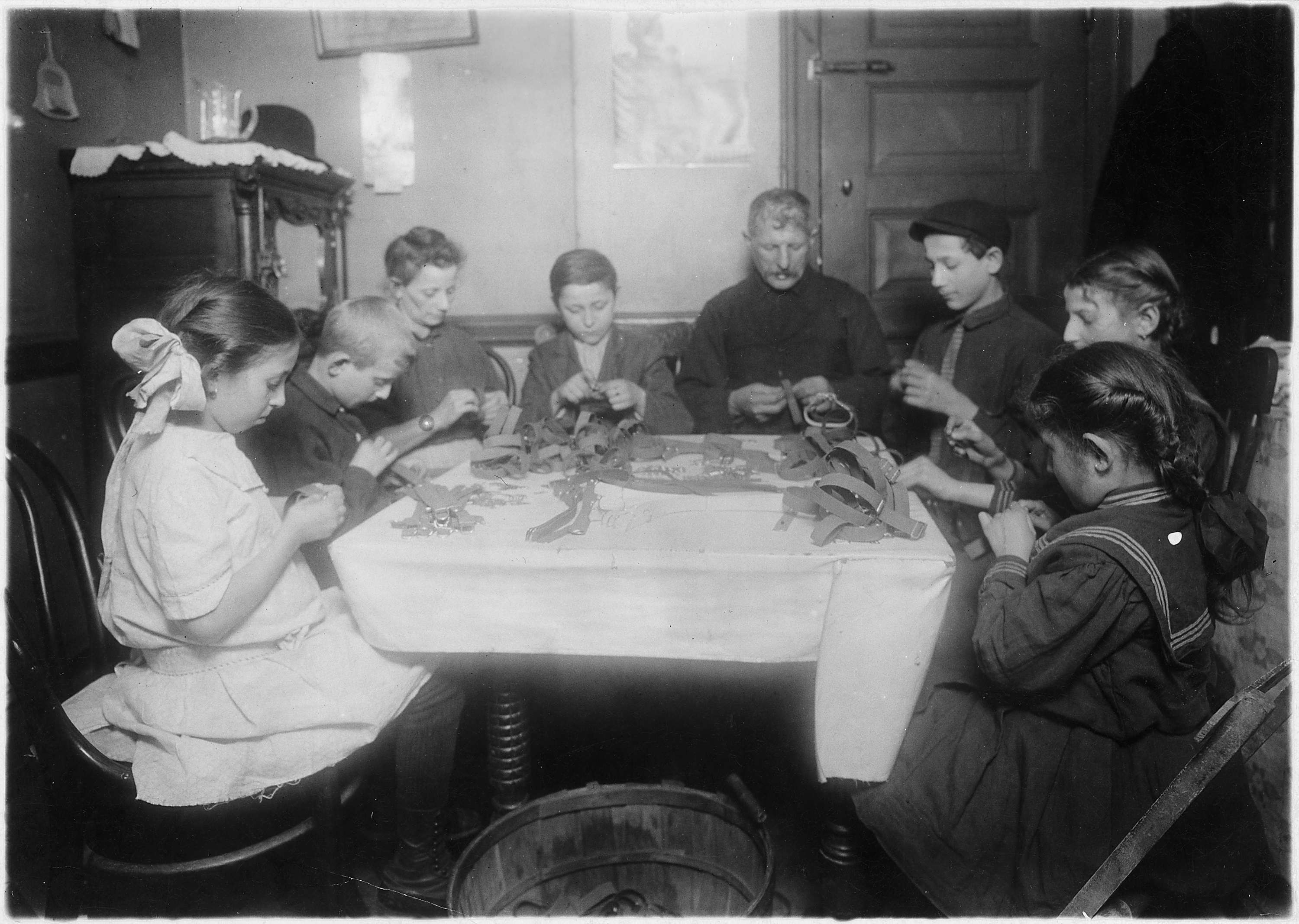
Document
Photo of boys working in Arcade Bowling Alley. Photo taken late at night. The boys work until midnight and later. Trenton, N.J.
12/20/1909
This primary source comes from the Records of the Children's Bureau.
National Archives Identifier: 523246
Full Citation: Photo of boys working in Arcade Bowling Alley. Photo taken late at night. The boys work until midnight and later. Trenton, N.J.; 12/20/1909; Records of the Children's Bureau, . [Online Version, https://docsteach.org/documents/document/photo-of-boys-working-in-arcade-bowling-alley-photo-taken-late-at-night-the-boys-work-until-midnight-and-later-trenton-nj, April 19, 2024]Photo of boys working in Arcade Bowling Alley. Photo taken late at night. The boys work until midnight and later. Trenton, N.J.
Page 2

Document
Photograph of a Young Shrimp Picker Named Manuel
ca. 1912 - 1913
Original caption: Manuel the young shrimp picker, 5 years old and a mountain of child labor oyster shells behind him. He worked last year. Understands not a word of English. Biloxi, Miss.
This primary source comes from the Records of the Children's Bureau.
National Archives Identifier: 523394
Full Citation: Photograph of a Young Shrimp Picker Named Manuel; ca. 1912 - 1913; Records of the Children's Bureau, . [Online Version, https://docsteach.org/documents/document/photograph-of-a-young-shrimp-picker-named-manuel, April 19, 2024]Photograph of a Young Shrimp Picker Named Manuel
Page 1
